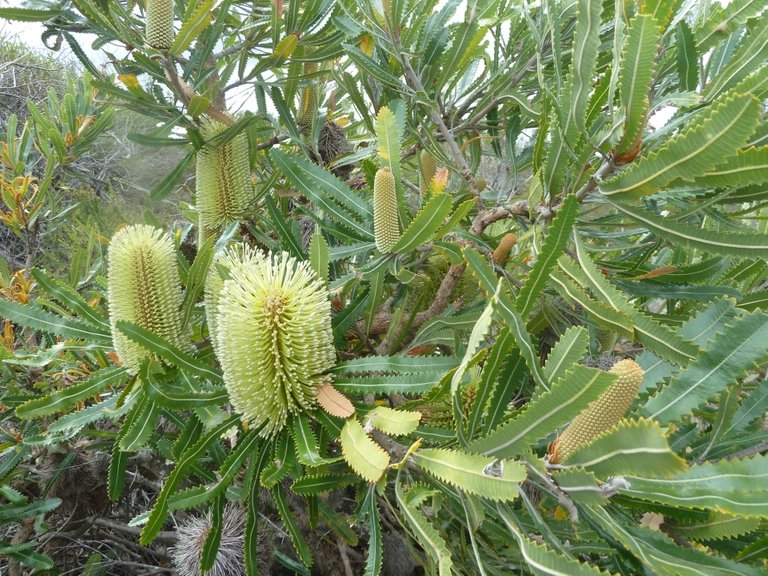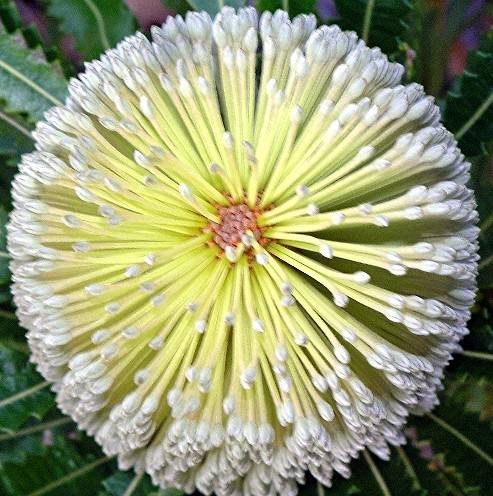Banksia Scrub and Woodland
Banksia.Two types of banksia woodland exist in Tasmania, those composed of saw-toothed banksia (Banksia serrata) and those consisting of honeysuckle (Banksia marginata).

Saw-toothed banksia populations (Banksia serrata) are of considerable importance. In Tasmania the species is only known to occur naturally in the north-west at Sisters Beach, the Dip Road and in Rocky Cape National Park. Very small populations also occur on Flinders Island in Bass Strait. Saw-toothed banksia usually grow on soils that are derived from very old and hard rocks such as quartzite (white coloured rock). As the saw-toothed banksia is so rare in Tasmania and the natural populations here represent the most southern geographic distribution of them in the world it is very important that we protect them for the future.

The second species, Honeysuckle (Banksia marginata) varies in appearance, forming a shrub or small tree. It is widespread in Tasmania and forms scrub and woodland on coastal sand dunes where the fire frequency is low. Honeysuckle also form groves in the Midlands, usually on sandy soils.

Some of these groves are extensive, up to 2 km in length with magnificent old trees, although the majority are small copses. Inland stands of banksia were probably once extensive in the grassy lowlands throughout south east Australia. Today, few remain and those that do are mostly in poor condition with weedy understories and little regeneration. Coastal stands of banksia generally survive in better condition.
